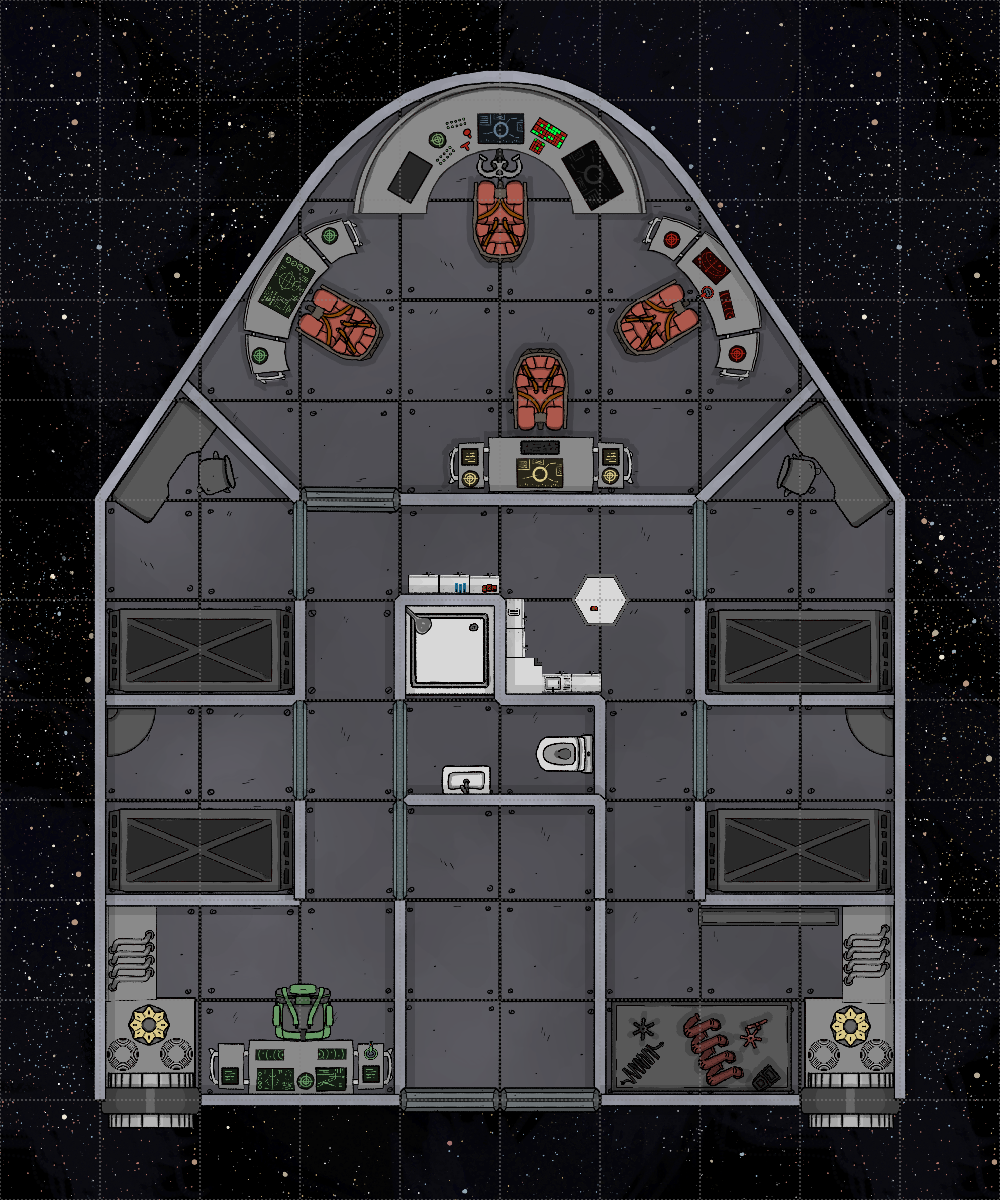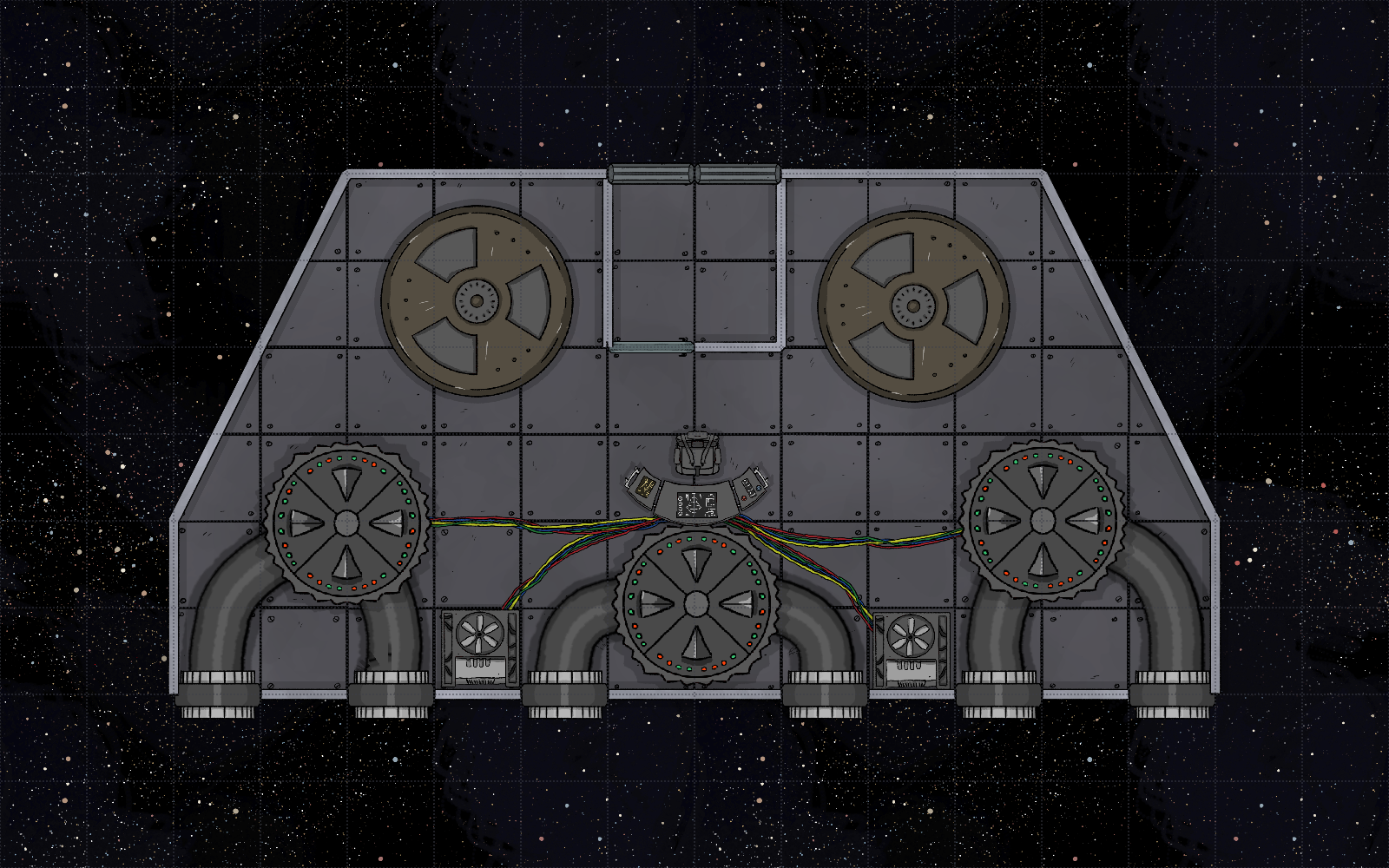Starship Construction
For many decades, interplanetary ships and ships that were later converted to starships were constructed in 3 segments and assembled in orbit. The fore and aft sections were typically constructed on the ground and then launched, while the midsection was constructed from smaller parts in orbit. After the advent of the AWK drive, and the ability to lift large masses into orbit cheaply, this tradition continued simply because the infrastructure was already in place. Of course, there are exceptions, such as newer small and medium-sized vessels that are assembled and designed for planetary landing, and newer national military vessels. However, approximately 85% of the ships currently in service still follow this pattern. The shape of starships is indeed so iconic, that some corporations have marketing data that suggests that ships outside of the normal pattern are sometimes not considered a "serious starship"
Starships are generally well constructed and last for a long time, much as 20th-century airplanes saw continued service decades after they were considered obsolete, starships have been projected to last for a century or more if they are properly serviced.
Foreward Section
This section traditionally consists of the bridge, avionics, living sections, and primary life support. In many older ships, this section also serves as a lifeboat (and occasionally as a re-entry vehicle) in the case of catastrophic engineering failure. Since this section was often launched in toto in the early years this section often appears like the well-known arrowhead or conical shape in order to aerodynamically streamline the initial launch.
Mid Section
For decades this section was constructed in orbit as a framework or lattice structure. In many older ships mass is saved by leaving the section uncovered and the components within covered individually. This section most often contains fuels, cargo, and occasionally non-essential crew modules. Also the connection of life support and a fully pressurized corridor for moving from fore to aft as well. Many ships used this section to connect to additional modules that allowed for the expansion of the function of the ship, including additional cargo, fuel, or any other external module that could be docked and clamped to the ship.Aft Section
Often referred to as "engineering", a holdover from naval terminology, this section contained engines, critical fuels, and auxiliary life support. the heavy engine components were often launched separately and assembled to form a bank of engines. These early engines used radioactive fuels of various sorts and hence were kept at a distance from the fore of the ship, often resulting in ships that were longer and arrowlike in shape.
I swear some of these older transfer ships look like something out of 20th century science fiction films, you know the one with the rediculous premise that the whole moon could go spinning off on intergalactice adventures at a significant percentage of the speed of light. As rediculous as it sounds art seems to preceed real life somehow.







Comments